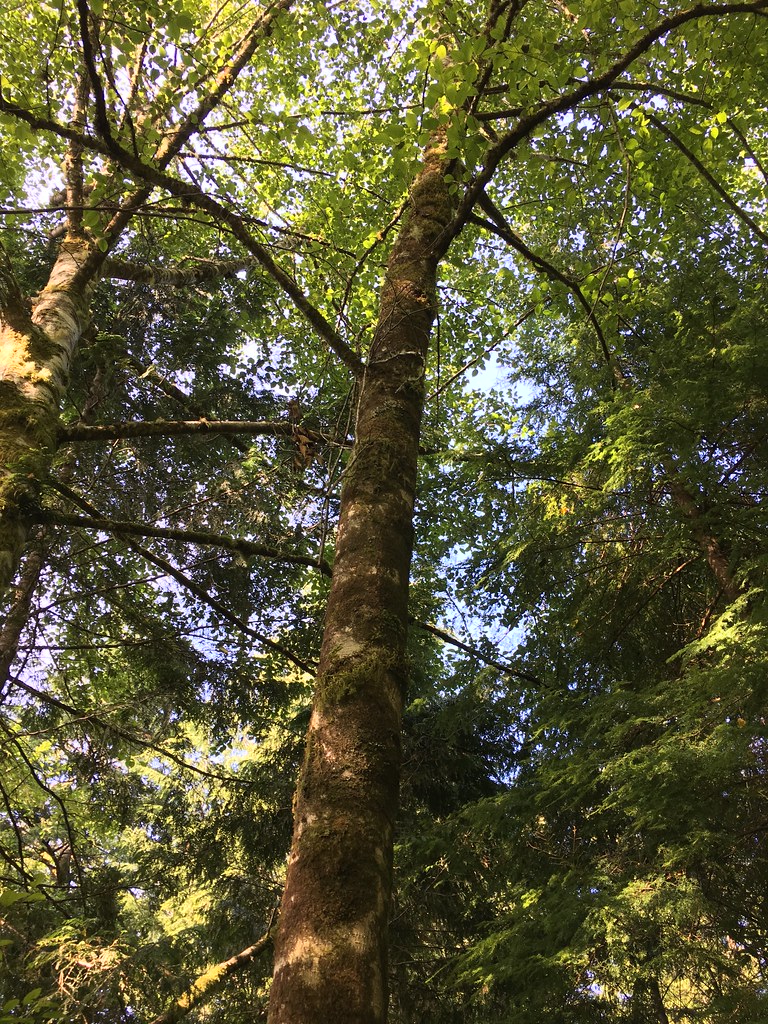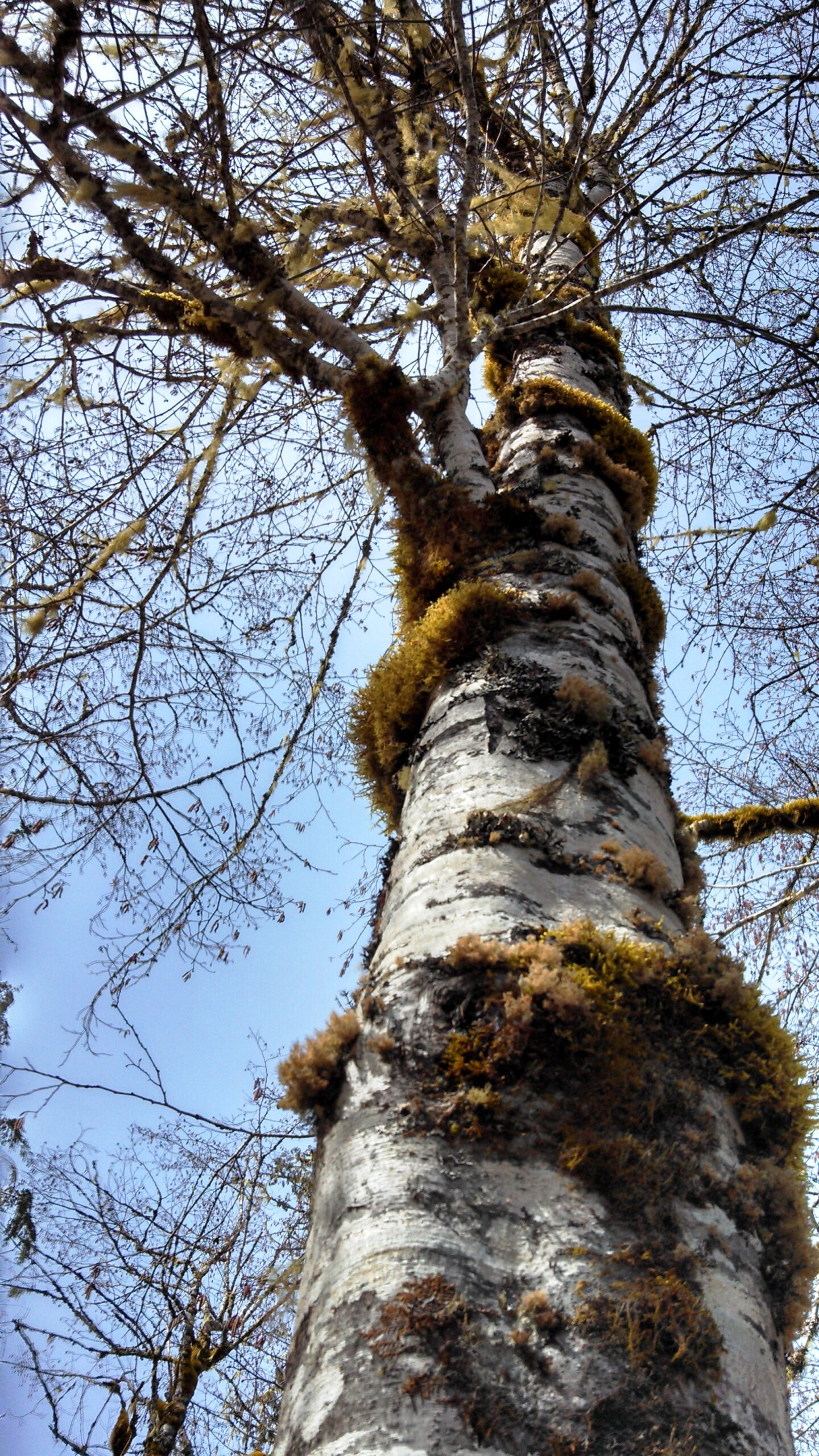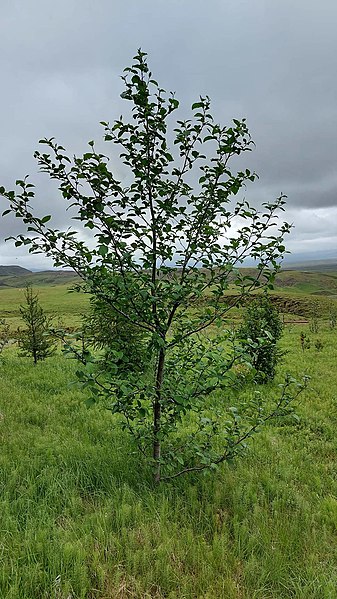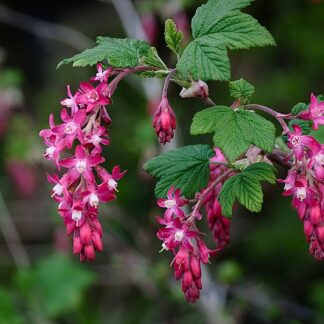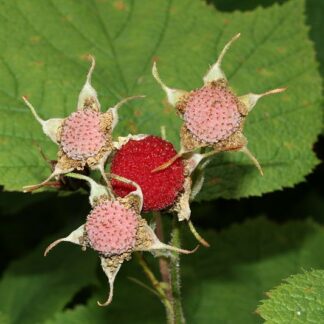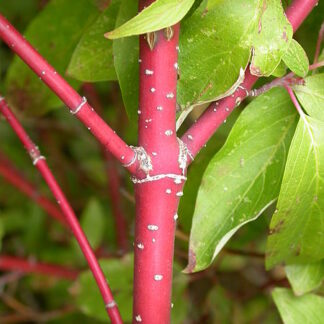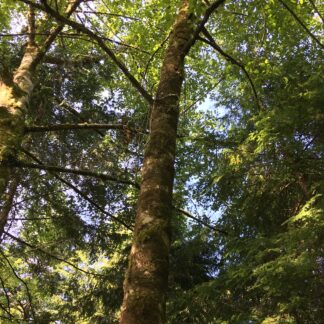Description
Sold in bundles of 10.
At a Glance: A fast-growing deciduous tree well suited to disturbed sites.
Height: Up to 80 feet (25 meters).
Stems: Bark is thin and gray with smooth white patches of lichens.
Leaves: Leaves are alternate, broadly elliptic, sharply pointed at the base and tip, smooth above and slightly rust-colored below. Leaf margins are wavy and folded-over with coarse, blunt teeth. Size: 5-15 cm (2-6 in) long. Leaves remain green until dropping in the fall.
Flowers: Male flowers appear as hanging, cylindrical spikes (catkins) and emerge before leaves while female flowers are borne in small stubby cones. the catkins are reddish-orange with yellow highlights, 5-12 cm (2-4.5 in) long. The femal cones are green when young, then turning brown, 2 cm long.
Flowering Period: March.
Fruits: Clusters of brown cones 2 cm long containing oval-shaped, winged seeds remain on the tree over winter months.
Appeal: Red Alder is a ‘soil building’ species. It is nitrogen fixing, meaning it is able to convert nitrogen from the atmosphere into a form available for plants in the soil. It also adds a considerable amount of organic matter to the soil through heavy leaf fall. Red Alder has significant commercial value in the Pacific Northwest. Its wood is valued for furniture and cabinet building, veneer, fuel, pulp, and sawdust for nursery soils.
Conservation Uses: Red Alder is an excellent conservation species. It establishes well on open, disturbed sites. It is often a naturally occurring pioneering species on clear cuts, burns, land slides and other disturbances. Once established, it is fast to grow above competing vegetation and provide shade for the surrounding habitat.
| Sun/Shade Tolerance | Hydrology | Elevation Range |
| Shade intolerant.
full sun > 80%
mostly sunny 60%-80%
partial sun and shade 40%- 60%
mostly shady 60%-80%
full shade > 80%
|
Grows taller in drier conditions.
wet
moist
dry
|
Below about 300 meters elevation.
low elevation
mid elevation
sub-alpine
high elevation
|
| Soil Preferences | ||
| Fixes nitrogen, can flourish in poor soils. | ||
|
sandy soils
gravelly soils
clay soils
muddy soils
peaty soils
|
well drained soils
shallow soils
deep soils
acidic soils
basic soils
|
humic soils
nutrient rich soils
nutrient poor soils
mineral soils
organic soils
|
| Wildlife Value | |
|
Berries
Seeds
Nectar for hummingbirds
Nectar for butterflies
Host for insect larvae
Thickets and shelter
Thorny or protective cover
|
Birds: Birds that eat the seeds, buds, and insects associated with red alder include mallards, widgeons, grouse, bushtits, kinglets, siskins, vireos, warblers, and chickadees. Birds that use red alder for cover and nesting include warblers, bushtits, and sparrows. Cavity-nesting birds nest and roost in the red alder tree cavities. Insects: The leaves are eaten by swallowtail butterfly larvae and tent caterpillars. Mammals: Mammals that eat the twigs, leaves, or wood include snowshoe hares, beavers, porcupines, deer, and elk. Other Wildlife: Alders create organic debris for soil organisms. Additionally, alders create good riparian cover for fish. |
References:
Pojar, Jim, and Andy MacKinnon. Plants of the Pacific Northwest Coast: Washington, Oregon, British Columbia & Alaska. Revised ed. Redmond, Wash.: B.C. Ministry of Forests and Lone Pine Pub., 2004. Print.
“Sound Native Plants.” Sound Native Plants. Web. 31 Oct. 2014. <www.soundnativeplants.com>.

